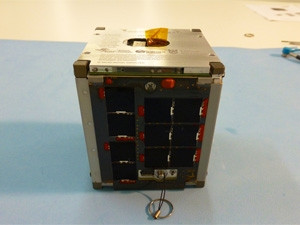
SA's first CubeSat satellite, built by CubeSat students at the French South African Institute of Technology (F'SATI), will be launched from Russia, on 21 November.
The satellite, called ZACUBE-1, is a type of nanosatellite measuring 10cm^3 and will be used to collect data on space weather. The satellite was built by students from F'SATI, which is based on the campus of the Cape Peninsula University of Technology (CPUT), in collaboration with the South African National Space Agency (SANSA) and the Department of Science and Technology.
SANSA spokesperson Vaneshree Maharaj says the nanosatellite will house science experiments, one of which will assist SANSA in collaborating with the space weather radar in Antarctica. "It is a demonstrator of new technology, as well as enabling our young scientists and engineers to gain practical experience in designing and developing these satellites."
While this is the third satellite to be launched by SA, it is the first nanosatellite to be launched on the African continent.
According to director of F'SATI, professor Robert Van Zyl, the CubeSat will be launched from Yasny Launch Base, in Russia, and placed in orbit at an altitude of 600km. Running on the same amount of power as a five-watt bulb, ZACUBE-1 will orbit the earth up to 15 times a day and its main mission will be to gather data on space weather for SANSA.
Van Zyl explains the CubeSat Programme uses CubeSat technology platforms for practical, hands-on skills training and applied research. "This approach offers our students a unique learning experience and prepares them very well to participate in the South African space industry."
Over a period of three years, the ZACUBE-1 programme has graduated 22 Master's students and contributed to 10 conference papers, three scientific journal papers, the development of the African Space Innovation Centre, and a research chair.
The team at CPUT is already developing ZACUBE-2, which will be three times larger than the first, says Van Zyl.
Last month, SANSA unveiled a high-frequency digital radar in Hermanus, which forms part of the Super Dual Auroral Radar Network (SuperDARN), an international network of more than 30 radars used to monitor the dynamics of space weather. The radar system is expected to be shipped to Antarctica later this year, where it will be installed at the South African Antarctic Research Base, SANAE IV.
Share